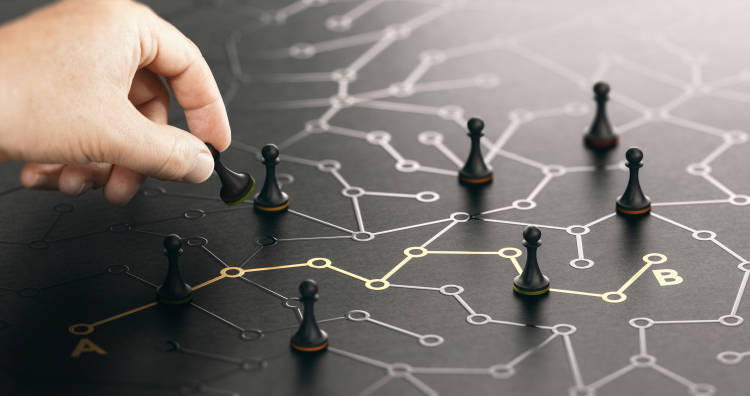The customer experience journey refers to the sum of all touchpoints and interactions a customer has with a brand throughout their entire lifecycle. It includes every interaction, from initial awareness and consideration to purchase, post-purchase support and advocacy. The customer experience journey typically spans multiple customer service channels, including in-person interactions, online platforms, social media, email and phone calls.
Consider a multichannel customer experience journey for a retail brand. A customer might first encounter the brand through an online ad, proceed to explore products on the website, seek advice from a live chat representative, visit a physical store for a hands-on experience, make a purchase via a mobile app and later receive follow-up communication via email or SMS regarding their satisfaction and future promotions.
Mapping the client experience journey is a collaborative effort that involves various departments within organizations, including marketing, sales, customer service and product development. It requires a deep understanding of customer needs, preferences, pain points and behaviors, often necessitating market research, data analytics and customer feedback input.
Why is it important to build a customer experience journey?
Building a well-defined customer experience journey map provides executives with a strategic roadmap, optimizing the customer touchpoints that shape brand perception, drive purchase decisions and ultimately influence profitability.
Customer-centric focus: A meticulously crafted client experience journey enables accurate anticipation of customer needs and timely, personalized assistance. Consequently, simple user interactions lead to active engagement and high customer satisfaction.
Loyalty and advocacy: A seamless, positive customer experience journey fosters customer loyalty and brand advocacy, translating into higher customer lifetime value and word-of-mouth marketing. Conversely, friction points breed dissatisfaction, churn and negative brand reputation, eroding shareholder value.
Note: If you’re looking for other ways to boost customer loyalty for your business and drive repeat purchases, referrals and positive word of mouth, implement proactive after-sales service. Here’s a 4-min video on the topic:
Operational efficiency: Mapping the journey exposes inefficiencies across departments, revealing opportunities for operational streamlining and cost reduction. Streamlined interactions mean happier customers and higher employee morale, further enhancing the positive feedback loop.
Data-driven decision-making: Client experience journey maps serve as living documents, continuously enriched by customer surveys, feedback and data analytics. This wealth of insights empowers data-driven decision-making across functions, enabling executives to anticipate and cater to evolving customer needs and preferences.
Competitive advantage: The client experience journey ensures consistent customer engagement at every touchpoint, fostering a sense of connection and trust between the customer and your brand. You can cultivate a strong brand perception characterized by reliability, authenticity and empathy through personalized interactions, empathetic service and proactive support. This differentiates you from competitors who may falter in providing the same level of engagement and personalized service.
Adaptability to evolving expectations: Customers today are increasingly self-sufficient and digitally savvy. They prefer purchasing via mobile and wearable devices without direct sales assistance. To adapt to the changing needs, you must offer digital customer service on the channels your customers frequent. Analyzing the customer journey helps to gain insights into their behavior and effectively tailor the approach to meet their evolving expectations.
Differences between customer experience journey and customer experience
Customer experience, often expressed as positive, negative or neutral, is the outcome of the customer experience journey. So, they are not the same. Here's how they differ:
Aspect | Customer Experience (CX) | Customer Experience Journey (CX Journey) |
📌Definition | Overall perception of customer interactions with a brand | Specific sequence of interactions during customer journey with a brand |
🔭Scope and focus | Broadly, encompasses all customer interactions with the brand, including products, services, interactions and overall brand perception | Focuses on mapping out and optimizing each stage of the customer's journey, from initial awareness to post-purchase activities |
⌛Timeframe | An ongoing, holistic concept that considers the entire lifespan of the customer-brand relationship | Typically refers to a specific, more linear timeline of interactions that occur within a defined period or scenario, such as the process of making a purchase or seeking customer support |
📊Depth of analysis | Overall perception, satisfaction, loyalty | Specific touchpoints and interactions within stages |
🎯Strategic importance | Critical for building strong brand loyalty, increasing customer retention and driving business growth | Essential for understanding and optimizing the customer experience at each stage of the journey |
📈Key metrics | Net promoter score, CSAT, customer effort score, retention rates | Conversion rates, abandonment rates, customer churn rates and customer journey completion rates |
Bonus Read: Customer Experience Optimization – All You Need to Know
Stages of a customer experience journey
While specific models may vary, a customer experience journey typically unfolds through five distinct stages.
Awareness: The first stage is the awareness stage, which aims to build brand awareness of your products or services among potential customers.
For instance, if a professional is looking for project management software, they may first become aware of a particular solution through a sponsored LinkedIn post or a recommendation from a colleague. Exposure to information related to their needs helps them become aware of specific solutions, laying the foundation for further exploration.
Consideration: This stage is where potential clients are interested in purchasing but still evaluate their choices. They're seeking confirmation that your solution addresses the precise issue that prompted their search. This is an essential stage in the client experience journey since purchasers need to understand why they should buy.
For a GenZ shopper comparing options for a new smartphone, the consideration stage is characterized by meticulous research, customer reviews and perhaps even consultations with industry experts on YouTube or the comments section of an Instagram post.
Decision: During the decision stage, customers are more likely to make a purchase as they have done most of their research and have a clear understanding of the problem and the ideal solution. This stage involves consultations with sales representatives, product demos or trials. The customers decide to engage with your brand through a purchase, subscription or contract agreement.For example, a B2B company might finalize a partnership with a software vendor after negotiating the terms and assessing the alignment of functionalities with their business objectives.
Post-purchase: During the post-purchase stage, customers anticipate receiving strong customer support and tailored suggestions that complement their purchase or needs. Customer experience leaders recognize the significance of building lasting relationships and providing exceptional post-purchase experiences that promote customer loyalty - the ultimate stage in the customer experience journey.
Loyalty: In the loyalty stage, consumers continue to use the product or service and may opt for more services or upgrade their subscription plan. For instance, a coffee enthusiast who regularly chooses a specialty brand and is impressed with premium blends and exceptional customer service may become an advocate on social media, recommend the brand to others and actively participate in loyalty programs.
Must Read: Social Media Advocacy: Strategy and Best Practices
How to build a customer experience journey map
Customer journey mapping allows you to identify each customer's needs and create an experience uniquely tailored to their preferences.
But to build an accurate client experience journey map, capturing all customer touchpoints across all platforms and contact center channels is essential. Here is a step-by-step guide to mapping a client experience journey:
Step #1: Define clear objectives
Start by defining specific goals for your customer experience journey map. Determine what action you want your customer to take at each stage: free trial, subscription, sign-up, awareness or anything else.
Step #2: Identify customer personas
Conduct market research, gather customer feedback and create detailed buyer personas to identify their preferences, pain points and motivations. By gaining insights into their demographics, behavior and psychographics, you can tailor the journey to meet their specific needs and expectations.
Step #3: Gather customer intelligence
Leverage website traffic, purchase data and customer engagement metrics to map customers’ behavioral patterns. Gather insights from these sources with the help of a unified customer experience platform to deepen your understanding of their thoughts, feelings and actions at each touchpoint.
Step #4: Chart touchpoints
Map out every digital and physical interaction across customer touchpoints, including website visits, social media engagement, email communication, phone calls, in-store experiences, product demonstrations and customer support interactions. Determine where and how customers engage with your brand.
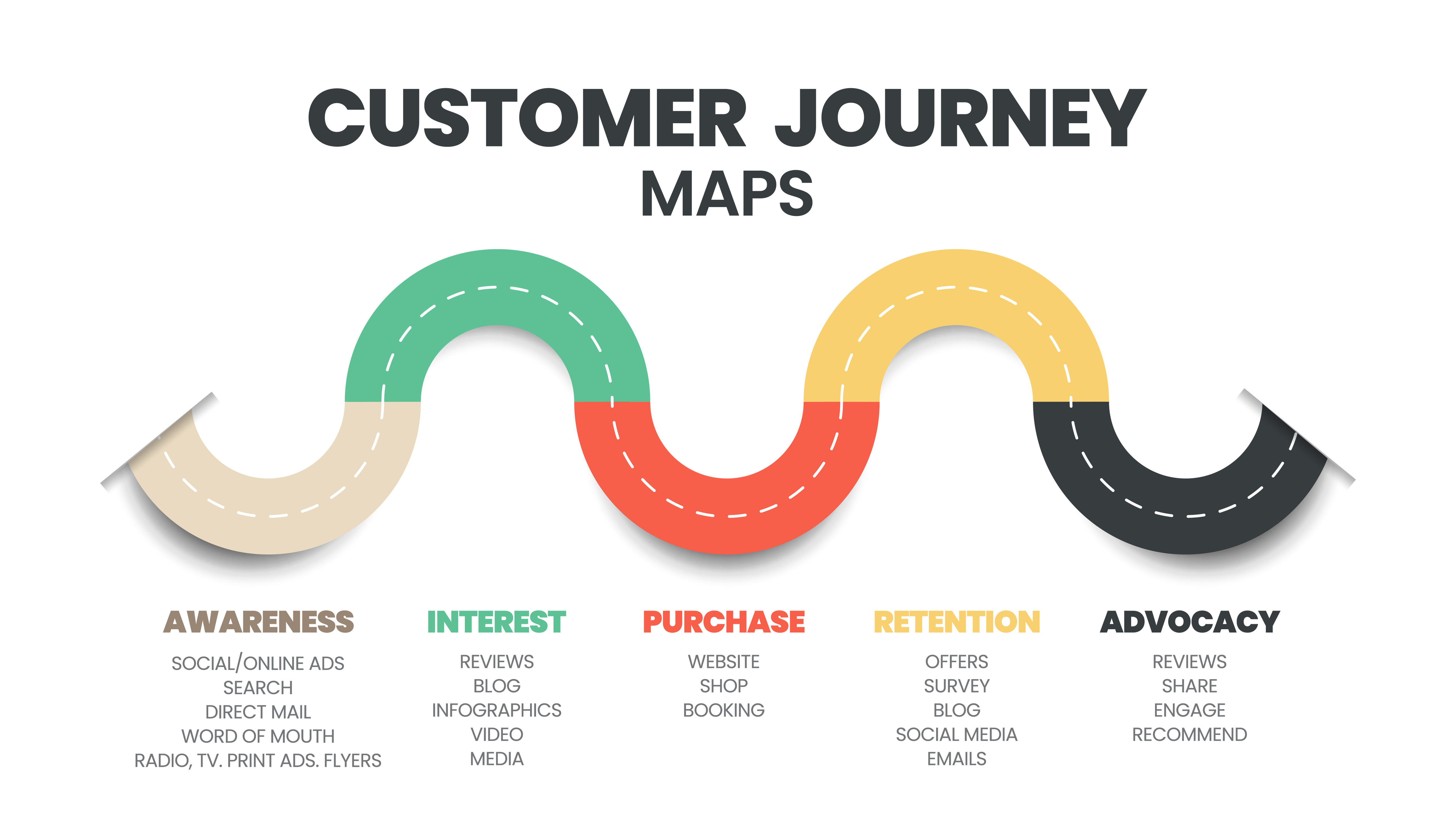
Step #5: Create logical stages
Arrange the touchpoints chronologically to create a sequential narrative of the customer journey. Start with the initial awareness stage, followed by consideration, purchase and post-purchase interactions. Ensure that the sequence accurately reflects customers' typical path when engaging with your brand, considering multiple entry points and potential deviations from the standard path.
Step #6: Add emotional context
Try to capture your customers' feelings at each touchpoint based on their actions. Infuse emotions into your customer journey map since positive sentiments strongly impact purchase decisions.
Pro Tip
Customer experience journey mapping tools with built-in omnichannel sentiment analysis capabilities help you quantify and visualize customer emotions throughout the journey. By tracking changes in emotional engagement levels over time, you can assess the impact of your customer experience efforts and adjust as needed.
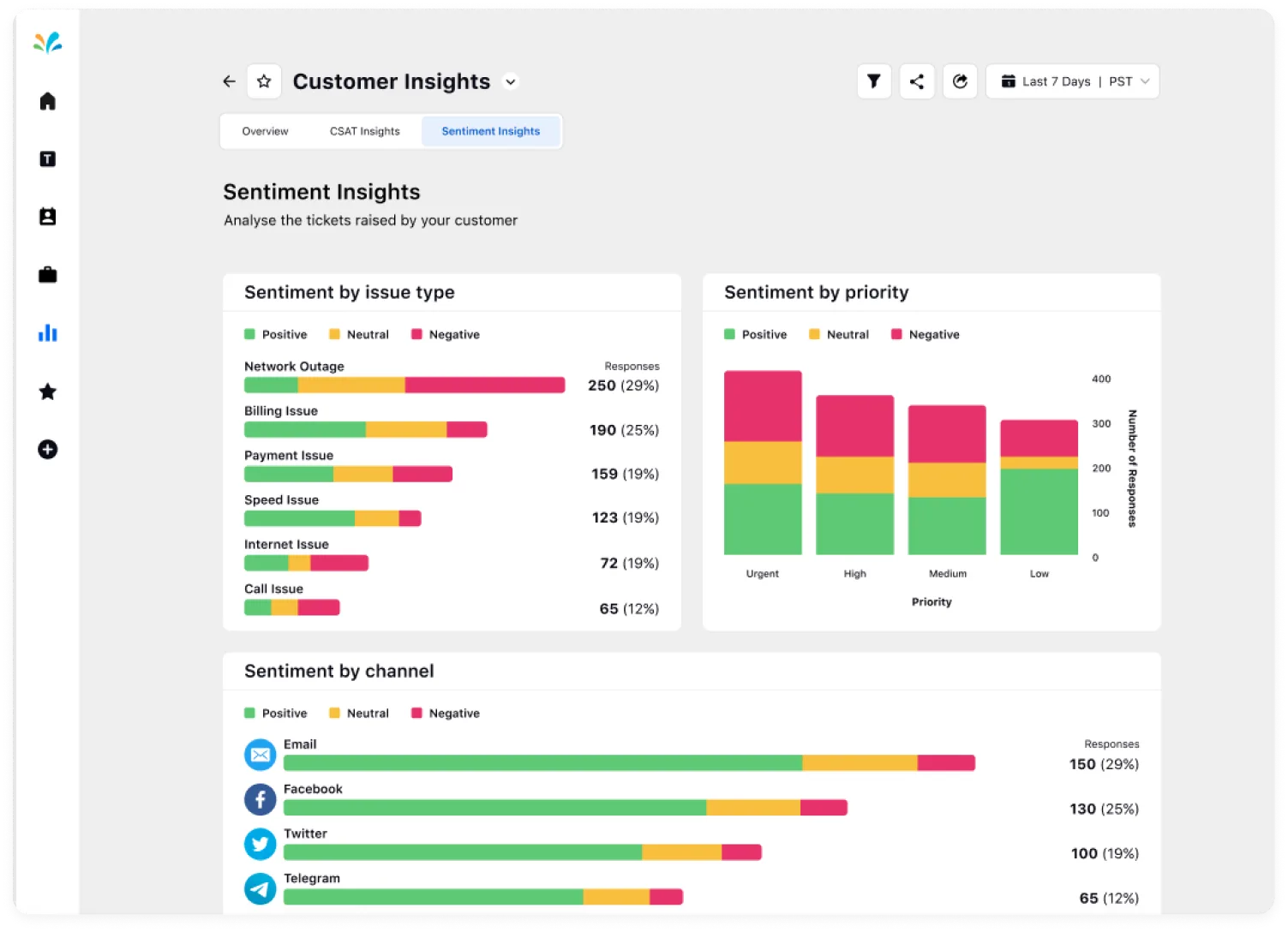
Step #7: Identify pain points
As you map out the customer journey, identify potential pain points, bottlenecks and opportunities for improvement. These could be areas where customers experience frustration, confusion or dissatisfaction or where opportunities exist to exceed expectations and delight customers. Pay attention to moments of truth — critical touchpoints that significantly impact overall customer experience.
Step #8: Prioritize improvement areas
Identify areas of improvement that will have the maximum impact if fixed. This may involve improving website navigation, streamlining checkout processes, training contact center agents or launching targeted marketing campaigns. Take those up on priority and use them as opportunities to elevate customer experience.
Step #9: Validate and iterate
Once you've created a draft of the client experience journey map, validate it by gathering feedback from stakeholders, including employees, customers and partners. Use qualitative and quantitative research methods, such as surveys, interviews, usability testing and journey mapping workshops, to gather insights and validate assumptions. Iterate on the customer experience map based on feedback, making adjustments and refinements as needed to ensure its accuracy and effectiveness.
5 tips to elevate client experience journey
Here are five actionable tips to help take your customer experience to the next level:
💬Embrace hyper-personalization with AI
Utilize AI-powered recommendation engines, chatbots and dynamic content to deliver personalized experiences at each touchpoint. Anticipate needs, suggest relevant products and offer solutions before issues arise.
How Sprinklr AI helps:
Sprinklr AI+ unlocks your business's potential by giving deeper insights into customer preferences and anticipating future behavior. Create targeted audience strategies, bespoke content, personalized product recommendations and impactful promotions. Transform every interaction into a valuable conversion opportunity.
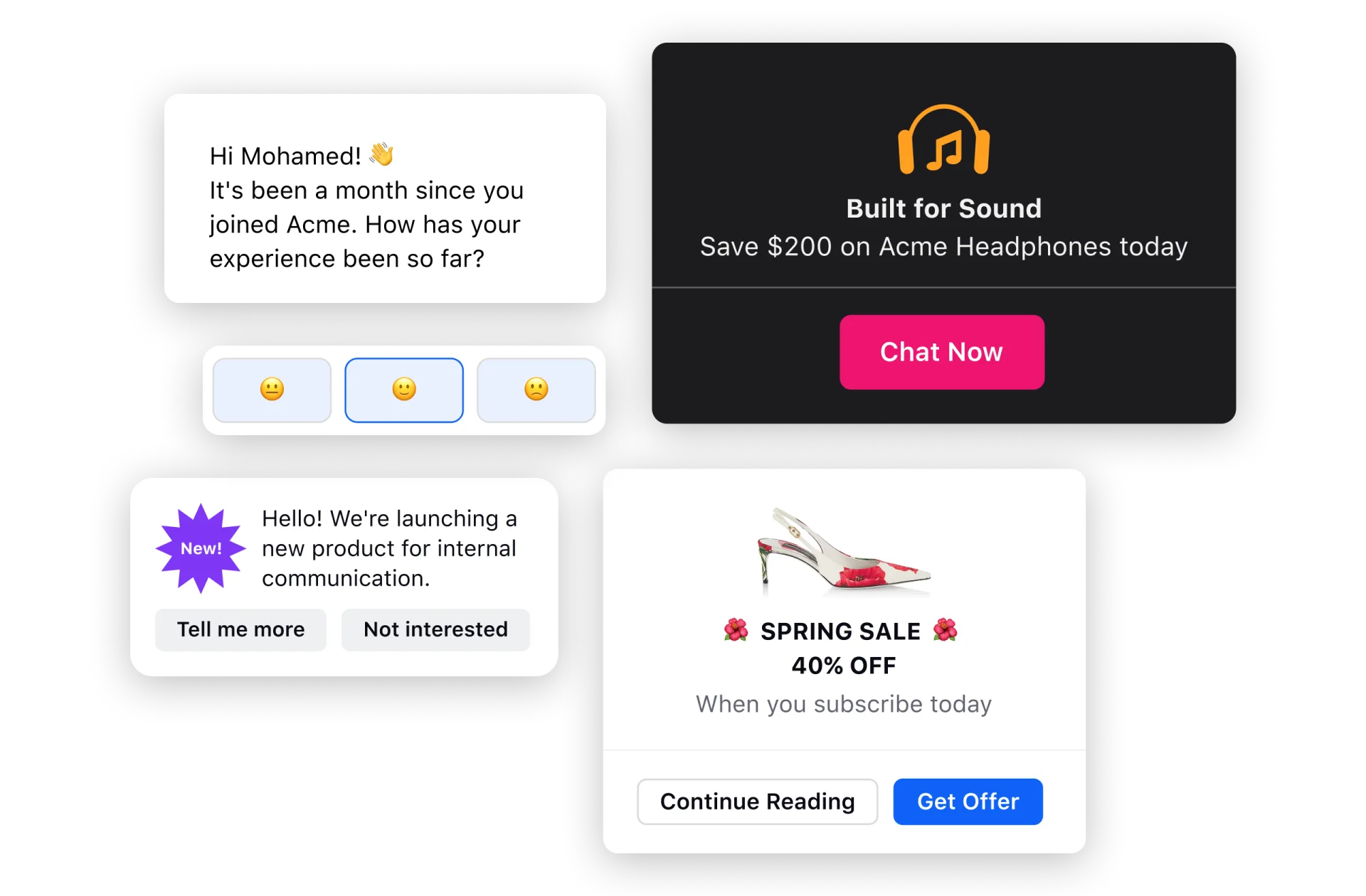
📲Adopt an omnichannel strategy
To provide a seamless experience for customers, it's important to adopt an omnichannel customer service strategy. This means ensuring that conversations can smoothly transition between online, offline and mobile interactions. By using a unified platform that incorporates bots and intelligent routing, cases can be escalated to the right agents with complete context transfer. This results in a more unified and smoother experience for customers.
Good to know: With the modern omnichannel routing platform, you can streamline your workflows across channels and unlock the full potential of your agents. By leveraging AI to match customers with the right agent based on their unique needs and history, you can deliver personalized and efficient service that leads to happier customers. Learn more about omnichannel routing.
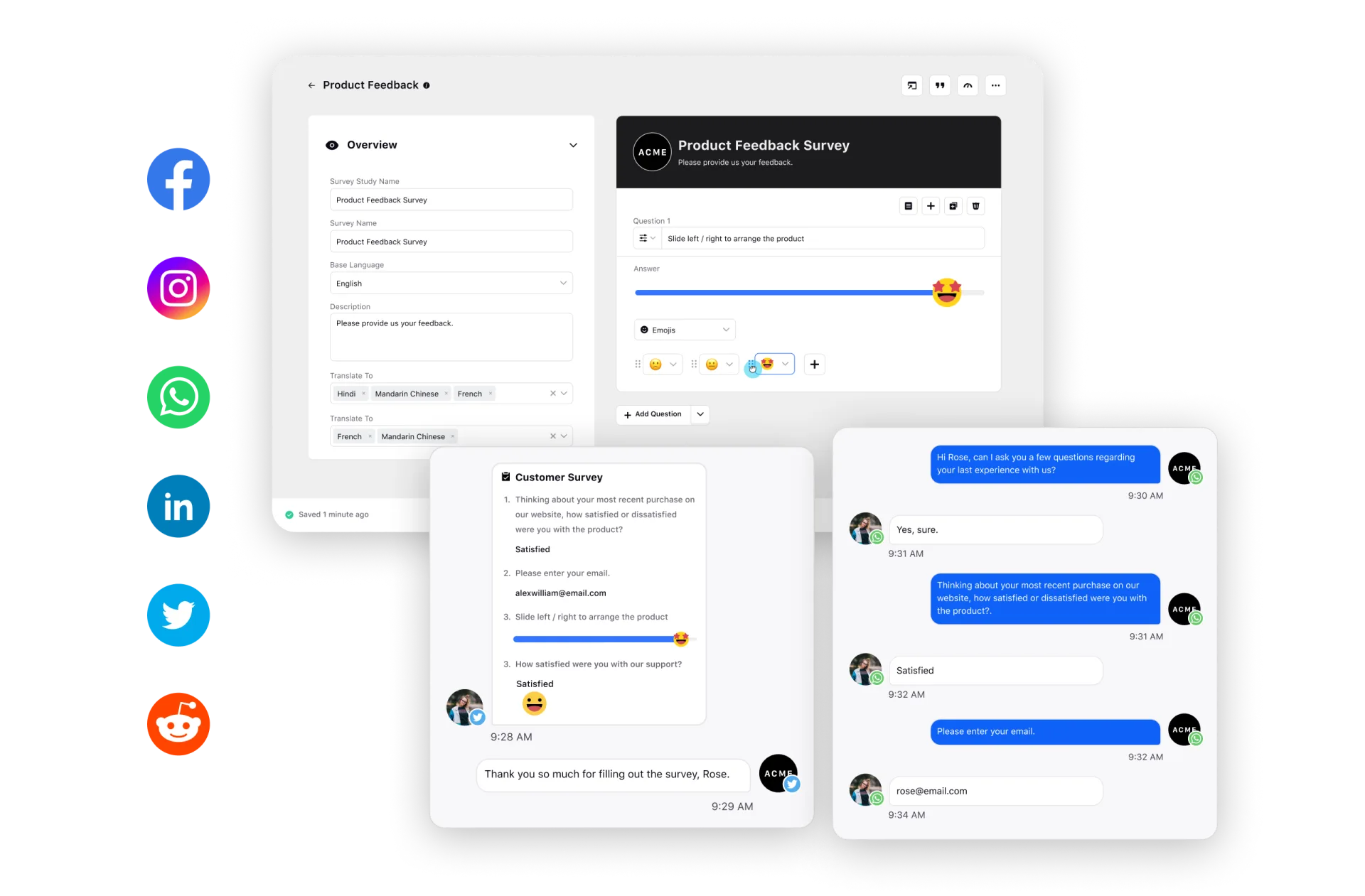
📞Elevate the voice experience
Leverage voice bots and conversational interfaces to offer convenient, hands-free interactions. Integrate voice search, ordering and support options to cater to the growing demand for voice-based interactions.
🥽 Harness the power of augmented reality
Enhance product exploration and decision-making by offering augmented reality experiences. Allow customers to virtually try on clothes, visualize furniture in their homes or see how products work, all within the comfort of their own space.
🏆Empower your employees as CX champions
Equip employees with the tools and training to deliver exceptional service at every touchpoint. Foster a culture of empathy, active listening and problem-solving to create genuine connections and memorable experiences.
While the client experience journey presents numerous opportunities for businesses to engage and delight customers, it also comes with its fair share of challenges. From fragmented touchpoints to inconsistent messaging and a lack of personalized experiences, businesses often struggle to deliver the seamless, cohesive journey that modern consumers demand.
Sprinklr, built on the world’s first Unified-CXM platform, addresses these challenges head-on. By providing deep insights into customer preferences and accurately predicting future behaviors, Sprinklr empowers you to create cohesive and consistent customer experience journeys at scale.
To know how Sprinklr works, hit the button below and register for a personalized demo from our experts today!
Frequently Asked Questions
related products
Thank you for contacting us.
A Sprinklr representative will be in touch with you shortly.
Contact us today, and we'll create a customized proposal that addresses your unique business needs.
Request a Demo
Welcome Back,
No need to fill out any forms — you're all set.
